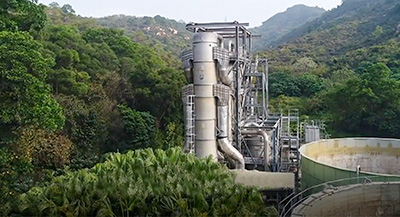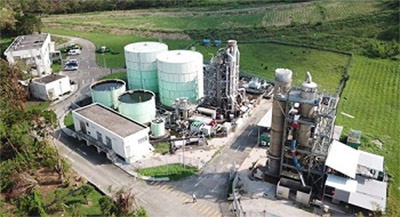
The Process of Converting Ammonia to Hydrogen
When exploring sustainable energy options, changing ammonia into hydrogen is an innovative new idea that could lead to cleaner and better energy-producing methods. This change process has immense possibilities for dealing with environmental problems while creating fresh opportunities to produce energy and recover resources. With teamwork and creative methods like electrolysis or thermal ammonia recovery, scientists and business pioneers are leading us towards a hydrogen-powered economy. Come with us as we take a deep dive into the world of ammonia to hydrogen, discussing technologies, efficiencies, and future trends influencing clean energy production.
Understanding The Process of Converting Ammonia to Hydrogen
The process of changing ammonia into hydrogen is very significant for improving the environment and saving energy. New methods like electrolysis and thermal recovery systems allow ammonia to be easily turned into clean and flexible hydrogen, which can carry energy.
Technologies Used in Turning Ammonia Into Hydrogen
Different technologies are used to convert ammonia into hydrogen, each with its own benefits and uses. One example is electrolysis, which uses electricity to separate water molecules into hydrogen and oxygen. Electrolysis of an ammonia solution is a different way to make hydrogen from ammonia. Another method called thermal ammonia recovery works by heating up and removing ammonia from wastewater and then making hydrogen from the cleaned-up ammonia. These technologies provide long-lasting answers to hydrogen production, preparing a path for a more green and effective energy future.
The Efficiency of Extracting Hydrogen From Ammonia
Hydrogen extraction from ammonia is essential, affecting the total benefits gained. New developments in electrolysis technology, like the one by Coventry University called a lab-scale electrolyzer, make it possible to change recovered ammonia into hydrogen with high efficiency and dependability. The Organics’ Thermal Ammonia Recovery (OTAR) technology boosts energy effectiveness and endurance by using different energy sources for thermal processing. With improved extraction efficiency, hydrogen production from ammonia could become beneficial and eco-friendly for creating clean energy.
Future Trends in Hydrogen Fuel Production from Ammonia
The growing interest in hydrogen as a clean fuel source has sparked more attention towards ammonia production, a crucial way to produce hydrogen. Producing ammonia from renewable resources like wind or solar power and then turning this into sound energy through the Haber-Bosch method offers great potential for reducing our reliance on fossil fuels and decreasing emissions.
Ongoing research and development activities focus on improving ammonia-to-hydrogen systems’ efficiency and scalability. The Midlands Living Lab is a collaborative project between Severn Trent Water, Coventry University, Organics Group, and Environmental Monitoring Solutions that demonstrates the combined efforts being made to develop new methods for recovering ammonia while concurrently generating hydrogen. This real-life test site allows us to experiment with different technologies, like the OTAR Pilot plant, which is an example of how we can shape our future by creating sustainable energy from sewage waste. This explains how initiatives such as Midlands Living Lab play a significant role in promoting advancements related to using ammonia’s potential while improving the creation process for clean hydrogen. These projects signify key stepping stones towards establishing an economy centered around this type of green fuel source that drastically reduces greenhouse gas emissions while promoting long-term environmental sustainability. Ammonia has become increasingly important due to its ability to store renewable energy within chemical bonds. Using renewable electricity during electrolysis directly enables us to create and store valuable green hydrogen – this can be done using the Haber-Bosch method, where nitrogen gas combines with already-made pure H2O.
The shift towards converting ammonia to hydrogen is a remarkable opportunity. It aligns with the increasing demand for clean energy and promotes environmental care. Contact us today to learn more about how converting ammonia into hydrogen works and how it can help your operations.

